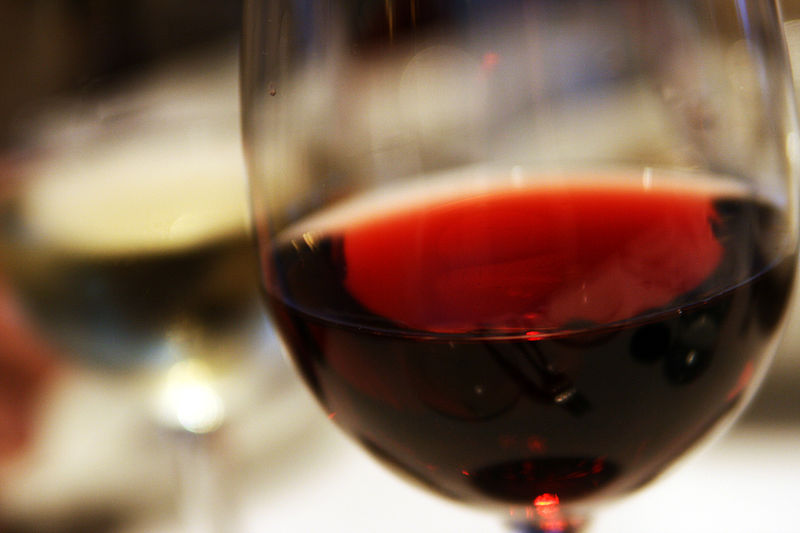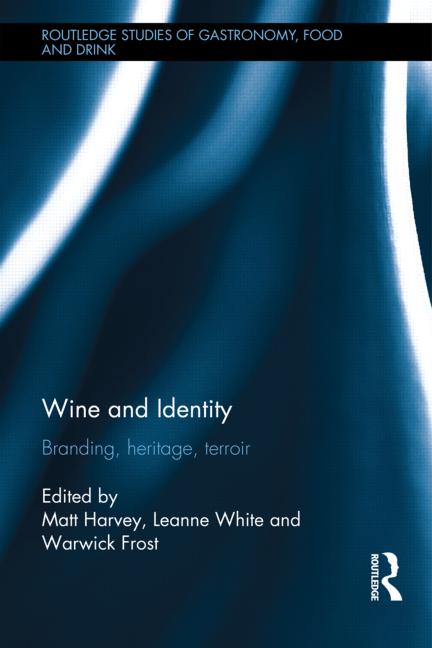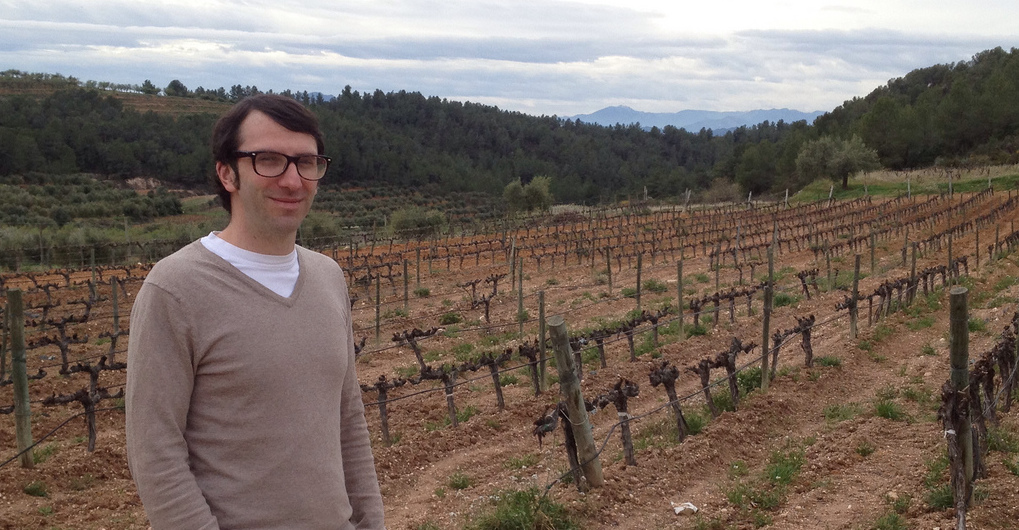
Wine and Identity: Branding, heritage, terroir, Edited by Matt Harvey Leanne White, and Warwick Frost. [Routledge, 2014]
I have fond memories of books from publisher Routledge from my graduate school days at Northern Arizona University. (Go Lumberjacks!) Two of their titles greatly influenced the theoretical construct of my MA Thesis: Imperial Eyes: Travel Writing and Transculturation by Mary Louse Pratt and Imperial Leather: Race, Gender, and Sexuality in the Colonial Contest by Anne McClintock.
 So it was with great pleasure to have this publisher send me a review copy of Wine and Identity, a volume of edited essays considering the interplay of the two through branding, heritage, and terroir. It's a book that offers frameworks for understanding how marketing, tourism, the culture(s) of wine, and generational shifts intersect (or diverge). While I appreciate the theoretical contributions of Wine and Identity, more direct quotes from those working in wine PR, marketing, sales, and production--along with consumers who make the purchasing decisions--would have added compelling texture and detail.
So it was with great pleasure to have this publisher send me a review copy of Wine and Identity, a volume of edited essays considering the interplay of the two through branding, heritage, and terroir. It's a book that offers frameworks for understanding how marketing, tourism, the culture(s) of wine, and generational shifts intersect (or diverge). While I appreciate the theoretical contributions of Wine and Identity, more direct quotes from those working in wine PR, marketing, sales, and production--along with consumers who make the purchasing decisions--would have added compelling texture and detail.
Highlights of Wine and Identity include a look at what French Generation Y (aka Millennials) men and women think of wine. It's a much more dour outlook than the touted wine revolution in the United States. In "Evolution of French wine identity: Baby boomers and Generation Y", Thiery Lorey writes, "Generation Y seems to confine wine to a luxurious and hardly accessible world." And they "...very closely associate wine consumption with exceptional moments...." Unlike in America, twentysomethings don't seem to be the future of wine.
This loss of the importance of wine heritage for a country, like France, steeped in it contrasts greatly with what's happening in Britain. The nascent wine industry there is being buoyed by a sense of national pride, where the "Englishness" of a bottle is a positive selling point, closely tied in with the locavore food movement.
The big takeaway from Wine and Identity is how lifestyle marketing is creating a kind of mental and virtual terroir. "Place myths" are being created around the names of wines, the labels, even wineries themselves in both their physical and online presence. Authenticity, in other words, is something that can be developed in a building, in a bottle, and in the glass.
This manufactured authenticity is related to the unexamined wine-consuming life."People drink the image and symbols of wine before they learn to appreciate its taste," maintains Danielle Cornot, discussing the Malaysian wine market. Like drinking wine at the opening of an art gallery show, wine isn't discussed but rather consumed as an appropriate part of the atmosphere and context of the event.
This reluctance to talk about wine in social settings may be born out of fear of saying the wrong thing. Statia Elliot and Joe Barth, discussing Canadian wine brands, see marketers turning this anxiety into an asset:
"There may be a perception that describing a wine is a requirement of drinking a wine, and the fear of using an incorrect adjective--is it fat or flabby, crisp or clean--prohibits its libation. However, if the description of a wine is an authentic, concise, perhaps humorous brand story, it can lessen the cognitive challenge and enhance the enjoyment of the occasion."
Fabrication of brand story also reveals itself in the literal fabrication of modern wineries. As Tobias Daneilmeier asserts, in recent decades "...winery architecture turned into the most powerful tool to express place identity and terroir." Daneilmeier continues,
"Wineries that once used to be cultural expressions of connections between land, produce, and people, have separated into machines for production and into performative places that offer hospitality functions. While producers and consumers benefit from the use of innovative technologies and methods in multiple ways, winemakers often display an historical and romanticised picture of winemaking. This paradox, which is also manifested in the architecture, is not only tolerated by the visitors but also desired."
My quibbles with Wine and Identity start in the introduction by the editors: "Unlike milk, flour, fruit or vegetables, consumers seek information about where, when and how wine is made, and this is a major factor in their purchase decisions." I see it as the opposite. While consumers will scrutinize food for being local, organic, and produced with an artisan bent (see "Portlandia" for the ultimate parody of this ethos), they'll pull a random bottle of Chardonnay off the shelf without giving it anywhere near the consideration.
I enjoyed a discussion by Abel Duarte Alonso and Assesandro Bessan of the recent development of the interest in Sherry thanks to modern cuisine and the cocktail scene, but their recommendation that Sherry producers develop profiles in their wines that suit a wide variety of international palates is at odds with the styles currently available: bone-dry, richer, nectar-sweet and many in between. Consumers need to be educated about what's already available.
And when the authors state, "Future studies could gather the views of Jerez's hospitality entrepreneurs, including the views of restaurateurs or bar operators," I wonder why they aren't talking to them in the first place. Strong contributions from "supply stakeholders" would add welcome context.
Sommeliers will take exception with the assertion the "marriage of wine and food" is their primary concern rather than all elements contributing to a table's experience, a brief aside in a chapter on "Slovenian wine stories and wine identities" by Aleš Gačnik. And "Bordeaux blends" are not varietals nor varieties, as put forth in a discussion of the Okanagan Valley by Michael Conlin and Jonathan Rouse. A content analysis of New Zealand wine labels by Tobias Danielmeier would be more germane if there were pictures of the wine labels to supplement written descriptions.
Finally, this self-review in the conclusion should have been omitted: "This thought-provoking volume of 18 chapters could become a prescribed text for postgraduate coursework units or recommended reading for advanced undergraduate and post graduate students in a number of discipline areas."
Wine and Identity, while geared towards the world of academia, did give me plenty to think about regarding each aspect of wine production, from the label on the bottle to tasting room visits. How much are we constructing our own wine experiences versus assimilating the cues provided by fabricated authenticity? I'd like to think the former is driving my enjoyment.










